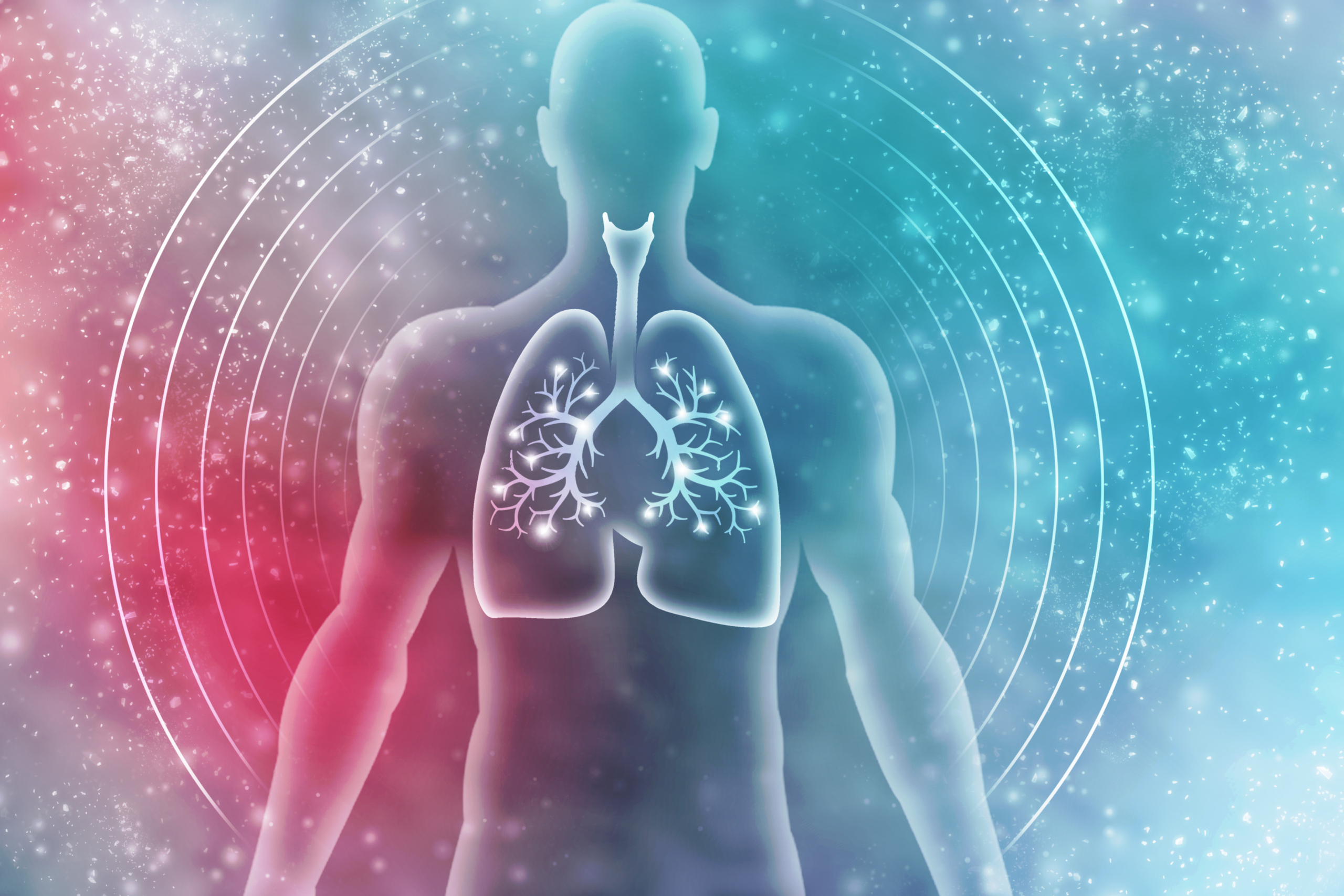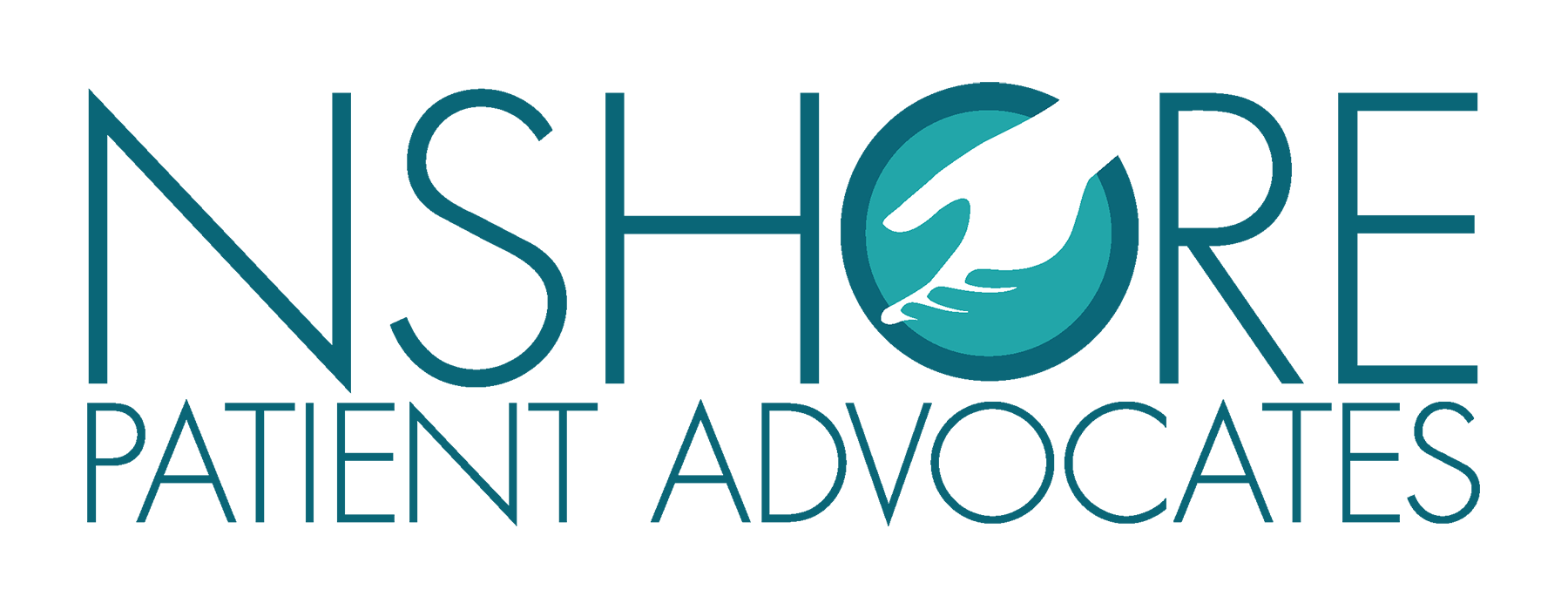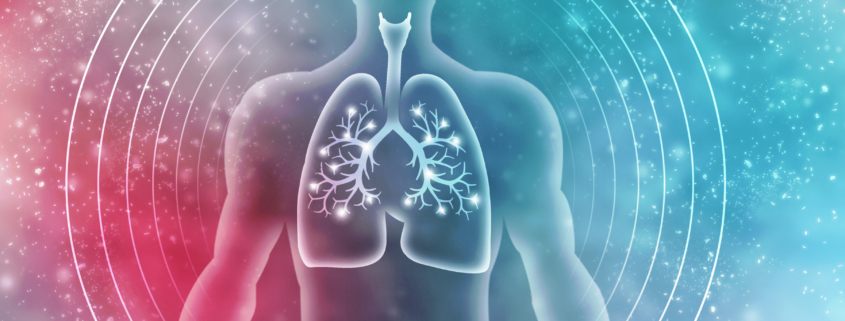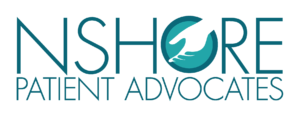Take Breath
We hear a lot about “breath” these days: breathwork, breathing treatments, breathing techniques, and more. Understandably so, since every system in the body relies on oxygen: cognition, digestion, immune response, stress levels, sleep. And especially during the past two years, these body systems have experienced greater challenges. So today, we want to share this beautiful guest blog by Linda Benton, from Linda Benton Yoga, on breathwork and feel confident it will empower you as much as it did us.

Because the quality of your breathing is so intimately related to the state of your overall health and well-being, balancing your breath will help you feel calmer and more able to face stress. When the breath flows normally and rhythmically, it distributes energy through pathways (72,000 nadis or channels – the left/Ida, the right/Pingala and the central/Sushumna), which releases blockages and allows energy to flow with the ability to stretch out and distribute energies further into the body. Each inhaled breath provides us with new energy and each exhale releases old, stagnant energy ~ releasing tension, stress and calming the “flight or flight” portion of our autonomic nervous system.
The nervous system is made up of two components 1) the sympathetic nervous system – “fight or flight” (reacting to fear, danger, stress) and the 2) parasympathetic nervous system – “rest or digest” (keeps us calm, happy, clear headed). Breathing is the structure that can help regulate the nervous system.
Breath Exercise
So now…
let’s explore this simple breath exercise. The body naturally lets the air come into the body. But the exhalation for most humans is far less of a count than the inhalation ~ let’s investigate that…..
Take a few minutes sitting comfortably or lying in Savasana to observe your breath. Just breath normally – don’t change anything and be sure to relax. After a minute or two while keeping relaxed (really important to keep relaxed, without changing the breath), count the length of you inhalations. Now stay with the count of the inhales for maybe 10 breath cycles – remember that count. Relax again, take a moment or two, and once again, without changing the breath, let’s now focus on the count of just your natural exhalations for maybe 10 breaths – remember don’t change a thing – breathe naturally and stay relaxed.
What was the count of your natural inbreath to your natural outbreath?
In the book “Breath ~ The New Science of a Lost Art” by James Nestor, he references that scientists discovered that our capacity to breathe has changed throughout the long processes of human evolution (and not in a good way), and that the way we breathe has gotten markedly worse since the dawn of the Industrial Age. Theses scientists discovered that 90% of us is breathing incorrectly and that this failure is either causing or aggravating a list of chronic diseases including asthma, anxiety, ADD/ADHD, psoriasis and more.
It takes 3.3 seconds for the average person to inhale and exhale. That’s 24k breaths a day, taking approximately 670 million breaths in your lifetime.
The Anatomy of Blood Circulation and the Diaphragm
How the blood circulates ~ once a minute through our arteries and veins – an average of 2,000 gallons of blood a day. This is essential to delivering fresh oxygenated blood to cells and removing waste.
The diaphragm is the muscle that sits beneath the lungs in the shape of an umbrella and acts as the pump to this circulation. As we inhale, negative pressure draws blood into the heart; as we exhale, blood shoots back out into the body and lungs and then recirculates. The diaphragm lifts during exhalations (which deflates the lungs), then drops back down to expand them during inhalations – 50,000 times a day. The diaphragm triggers the nervous system = sympathetic/parasympathetic.
A typical adult engages as little as 10% of the range of this diaphragm when breathing, which overburdens the heart, elevates blood pressure and causes a rash of circulatory problems. Extending breaths to 50-70% of the diaphragm’s capacity will ease cardiovascular stress, aid in the health of organs and allow the body to work more efficiently. The inhale will be a normal response in the body but the full exhalation will harness a power of health and well-being.
And besides this recirculation, what else is the breath charged with?
~ Distributes energy (prana) throughout the body. When this energy is low we feel tired/wired/pain/stressed
~ Aids in digestion
~ 95% of the body’s serotonin stockpile is in the gut – to move this out of the gut, we have to learn to breathe efficiently. Most disease starts in the gut when the gut becomes toxic.
~ Strengthens bones and the vertebrae in the spine
~ Influences your happiness
~ A shorter exhalation feeds the “bad wolf” aka the amygdala in the brain which promotes the clutch of grief
~ Breath is the most effective tool when working with anxiety and depression – it may be the only tool
~ Lowers stress and anxiety
~ Improves coping skills
~ Helps people deal with substance abuse
~ Improves self esteem
~ Controls our immune response and restores our health
~ Helps people deal with problems such as panic disorders, heart disease and lung disease
~ Breath affects the size and function of our lungs. Emphysema for example is a disease of exhalation
~ As you draw navel to spine, this action activates the vagus nerve to the internal organs. This in turn, stimulates blood flow to the organs to keep them healthy.
In the book “How God Changes Your Brain” by Andrew Newberg, M.D. and Mark Robert Waldman, they explain that “deeper breathing triggers a different neurological response and initially decreases activity in the frontal lobes. It lowers the amount of carbon dioxide in the blood, which in turn lowers blood flow in other parts of the brain and reduces cognitive activity. Simply put, it helps to calm your mind, so if you have trouble turning down your thoughts, deepen your breathing.”
How does our breathing affect our health? Whenever oxygen falls below 90%, the blood can’t carry enough of it to support body tissues. This can lead to heart failure (the health of the heart starts with gut health), depression, memory problems and early death if this goes on too long. In stressful times, we typically breathe too rapidly. This leads to a buildup of oxygen in the bloodstream and a corresponding decrease in the relative amount of carbon dioxide, which in turn upsets the ideal acid-alkaline balance—the pH level—of the blood. This condition, (respiratory alkalosis), can result in muscle twitching, nausea, irritability, lightheadedness, confusion, and anxiety. In contrast, slowing the breath raises the carbon dioxide level in the blood, which nudges the pH level back to a less alkaline state. As the blood’s pH changes, the parasympathetic nervous system calms us in a variety of ways, including telling the vagus nerve to secrete acetylcholine, a substance that lowers the heart rate.
Changing how we breathe will have a direct impact on our health and help us live longer. Researchers have found that the missing pillar in health is breath.
Slow, long, smooth focused breathing triggers the body’s parasympathetic nervous systems response to “rest and digest”. It also increases dopamine levels in different parts of the brain during meditation.
Muscles, anxiety, stress and grief release on the exhale.
Another Breath Exercise
So now…..
that we know all this, let’s start again.
We’ll use a Ujjayi breath which means nostril breathing, lips together but jaw relaxed (the top teeth will not touch the bottom teeth) – relax your pallet. This is very calming for the nervous system. AND think of what the sound of “ahhhhhhhhhhhhhh” is for both the inhalation and the exhalation ~ but the breath will be silent – no noise. Gently pulling the breath in on inhalation and gently pushing the breath out on exhalation against this resistance creates a well-modulated and soothing sound—something like the sound of ocean waves rolling in and out. It is important to remember that the key to Ujjayi breathing is relaxation; the action of Ujjayi naturally lengthens the breath.
With this in mind, take a few minutes sitting comfortably or lying in Savasana to observe your breath with an “ahhhhhhhhhhhhhh” on the inhalation AND “ahhhhhhhhhhhhhh” on the exhalation. Note: if this cause any anxiety, return to your normal breath and then maybe try it again.
Once relaxed and experiencing the “ahhhhhhhhhhhhhh” of an Ujjayi breath, see if you can match the count of the inhalation of the breath to the same count on the exhalation of the “ahhhhhhhhhhhhhh” of the breath. If you feel comfortable, with no anxiety or stress over this breathing pattern, see if you can lengthen the count of the inbreath to maybe four or more (stay relaxed) and the outbreath match that same count – 5, 6, 7. Stay with it (no anxiety) – stay with it for a minute or two. Slow, long and smooth ~ there is a transformative power of a full exhalation. Be fully absorbed in the sound of your own breath let yourself be more relaxed and peaceful with each breath. Ahhhhhhhhhhhhhh…… inhale; ahhhhhhhhhhhhhh….. exhale. And now allow your body to breathe itself and drop in deeper, let go even more.
In your own time, return to a natural and relaxed breath. Take some time to sit up before standing – in a seated position, pause, feel and scan the body – slowly, smoothly from head to toe AND from toe back up to head. And now, in your own time, come back to your day.
As you ensue throughout your day, set reminders/sticky notes around your house or work and make sure the breath is focused on exhalation. Where’s your breath? The inhalation will be free, gentle and natural. But both inhalations and exhalations will be slow, long and smooth. Again I remind you, if this causes any anxiety, return to your normal breathing pattern.
One brief word of caution before you begin: always check with your doctor. Gain your doctors permission to practice this type of breath work before entering into this daily practice. Never, overdo it in any breathing exercise. If you begin to feel uncomfortable, go back to your natural everyday breath. Never force your breath to do anything it doesn’t want to do. Believe it or not, your breath possesses an innate intelligence, honed over millions of years of evolution. Learn to trust its messages.
Peace, love & dogs,
Linda Benton
Teri’s Corner
What Health Information To Carry – And What Not To Carry – With You. Daily Herald
Traveling? Make Sure You Have This Health And Emergency Information With You. The Washington Post.
The Changing Rules For Hospital Visits. Daily Herald
Resolve To Be A Healthier And Happier You. Daily Herald




